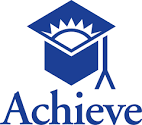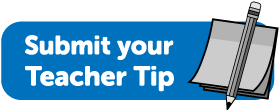Every Thursday on the EiE Blog, we bring you helpful teaching tips and new resources for your engineering classroom.
 Recently on the blog, we shared how EiE evaluators mapped our 20 elementary engineering curriculum units to state science standards and the Next Generation Science Standards (NGSS). We’re not the only organization thinking about alignment to STEM standards. Achieve, a Washington, D.C.-based education non-profit that works with states to improve standards, has created its own “EQuiP" rubrics to measure how different curricula align to NGSS.
Recently on the blog, we shared how EiE evaluators mapped our 20 elementary engineering curriculum units to state science standards and the Next Generation Science Standards (NGSS). We’re not the only organization thinking about alignment to STEM standards. Achieve, a Washington, D.C.-based education non-profit that works with states to improve standards, has created its own “EQuiP" rubrics to measure how different curricula align to NGSS.
States that adopt NGSS will likely turn to tools such as the EQuiP rubrics as they make important decisions about STEM curriculum. With that in mind, our team has now assessed the EiE curriculum units using the EQuip rubrics. You can examine these rubrics on the “Connections to Standards” page of our website.
 The name “EQuiP” stands for “Educators Evaluating the Quality of Instructional Products,” and indeed, Achieve recruited teams of classroom teachers to help develop these rubrics.
The name “EQuiP” stands for “Educators Evaluating the Quality of Instructional Products,” and indeed, Achieve recruited teams of classroom teachers to help develop these rubrics.
In mapping alignment to standards, they considered three things about lessons and curriculum units: Whether they. . .
- reflect the conceptual shifts in the science standards
- engage and support all students, and
- provide ways to monitor student progress
EiE scores high on all counts. For example, EiE units were intentionally designed to support learning for all students, with features that include tips for differentiating the lessons, sample guiding questions, and reproducible handouts for students at different skill levels. Every unit also includes embedded pre- and post-assessments teachers can use to monitor progress.
Achieve notes that the new rubrics are still a work in progress, and they welcome suggestions for improvement. We do, too!
Do you have an educator resource you’d like to share? TELL US! If we use your submission on the blog, we’ll thank you with the EiE Teacher Guide of your choice.
Engineering is Elementary is a project of the National Center for Technological Literacy® at the Museum of Science, Boston.









